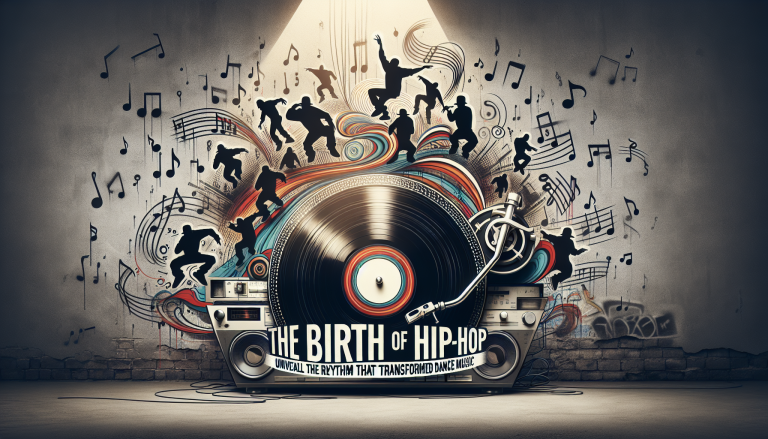The Birth of Hip-Hop: More Than Just a Beat
Imagine a sweltering summer day in the Bronx of the early 1970s—heatwave, block parties, and a relentless desire for expression coursing through the streets. Hip-hop wasn’t just born; it erupted like a sonic rebellion, fueled by the ingenuity of DJs and the raw energy of communities sidelined by society. This American music phenomenon sprouted from grassroots culture, where turntables and breakbeats became instruments of communication and storytelling.
Back then, hip-hop was a vibrant assemblage of four pillars: DJing, MCing (rapping), graffiti art, and breakdancing. It was a culture, a movement, and a language all rolled into one, creating an alternative platform for voices often ignored. The genre’s historical context is deeply tied to urban struggle, African-American and Latino youth creativity, and the quest for identity.
Decoding the Hip-Hop Sound: From Breakbeats to Revolution
At its core, hip-hop is an electrifying fusion of rhythm and poetry. The genre’s signature element, the breakbeat, was uncovered and repurposed by DJs like Kool Herc—whose groundbreaking technique involved isolating drum breaks to keep dancers hooked and elevate the party’s energy. These breaks became the heartbeat over which MCs weaved their rhymes, spinning narratives from the gritty streets, social injustices, love sagas, and unapologetic braggadocio.
Hip-hop’s sonic palette is vast: boom-bap beats crafted with crates full of vinyl samples, funky basslines, and clever wordplay backed by turntables and, eventually, digital production tools. Lyrics became weapons and shields, articulating life’s triumphs and turmoils with swagger and raw honesty.
Architects of the Movement: From Grandmaster Flash to Kendrick Lamar
Tracing hip-hop’s lineage is like watching a relay race of innovation handed down through generations. Grandmaster Flash, the unsung hero, perfected cutting and scratching, transforming DJing into an art form and ensuring the party kept its pulse. The Furious Five’s “The Message” (1982) smashed the mold by spotlighting despair and hope, heralding socially conscious rap.

Fast forward to the golden age—the late ’80s and early ’90s—where groups like Public Enemy, with Chuck D’s commanding presence, elevated hip-hop into a formidable political platform, shaking hip-hop’s foundations. Then, the smooth yet hard-hitting flow of Nas in “Illmatic” painted urban poetry with precision, while Tupac Shakur combined poetic sensitivity with street realism, forever embedding himself in the culture’s collective consciousness.
In the modern era, artists like Kendrick Lamar are torchbearers of hip-hop’s storytelling prowess, weaving complex narratives on albums like “To Pimp a Butterfly,” fusing jazz, funk, and soul influences into their work, proving hip-hop’s evolution is continuous and boundary-pushing.
Tracks That Shaped Culture: The Soundtracks of Generations
Some songs aren’t just tracks; they are cultural milestones. “Rapper’s Delight” by The Sugarhill Gang was hip-hop’s first crossover hit, crashing through mainstream doorways and introducing the world to rap’s infectious flow. Run-D.M.C.’s “Walk This Way” featuring Aerosmith melded rock and rap, breaking racial and genre barriers.
The Notorious B.I.G.’s “Juicy” became an anthem of triumph, narrating success against overwhelming odds, while Missy Elliott’s futuristic production and inventive lyricism brought playful innovation to hip-hop’s canvas. The summary is simple: these songs have transcended beats and rhymes; they’re the soundtrack to social change, personal struggle, and collective celebration.
Hip-Hop’s Enduring Impact: A Culture Without Borders
Hip-hop’s influence ripples far beyond the speakers blasting in New York’s boroughs. It reshaped global American music and cultural landscapes, inspiring fashion, language, politics, and identity. This rhythm-driven genre democratized music production and storytelling, empowering individuals to craft narratives that resonate universally.
From inspiring the rise of EDM and dance music producers who sample hip-hop beats, to influencing pop and R&B artists worldwide, hip-hop’s DNA is embedded in contemporary music’s core. It has become a tool for empowerment, activism, and artistic exploration, forcing listeners to confront realities often ignored.
As a club DJ, spinning hip-hop alongside EDM and dance music, I witness firsthand how the genre’s infectious energy unites crowds, breaking down barriers and sparking communal joy. There’s magic in the way a well-crafted beat and poignant lyricism can transform a night into an unforgettable experience—hip-hop doesn’t just play; it breathes, evolves, and lives in the hearts of millions.
—
Hip-hop remains a testament to creativity flourishing under adversity. Its evolution is a vibrant tapestry woven with innovation, cultural resonance, and relentless spirit. Dive into its beats, and you’re not just listening—you’re joining a movement, a legacy of rhythm and rhyme that forever reshaped American music and the world.